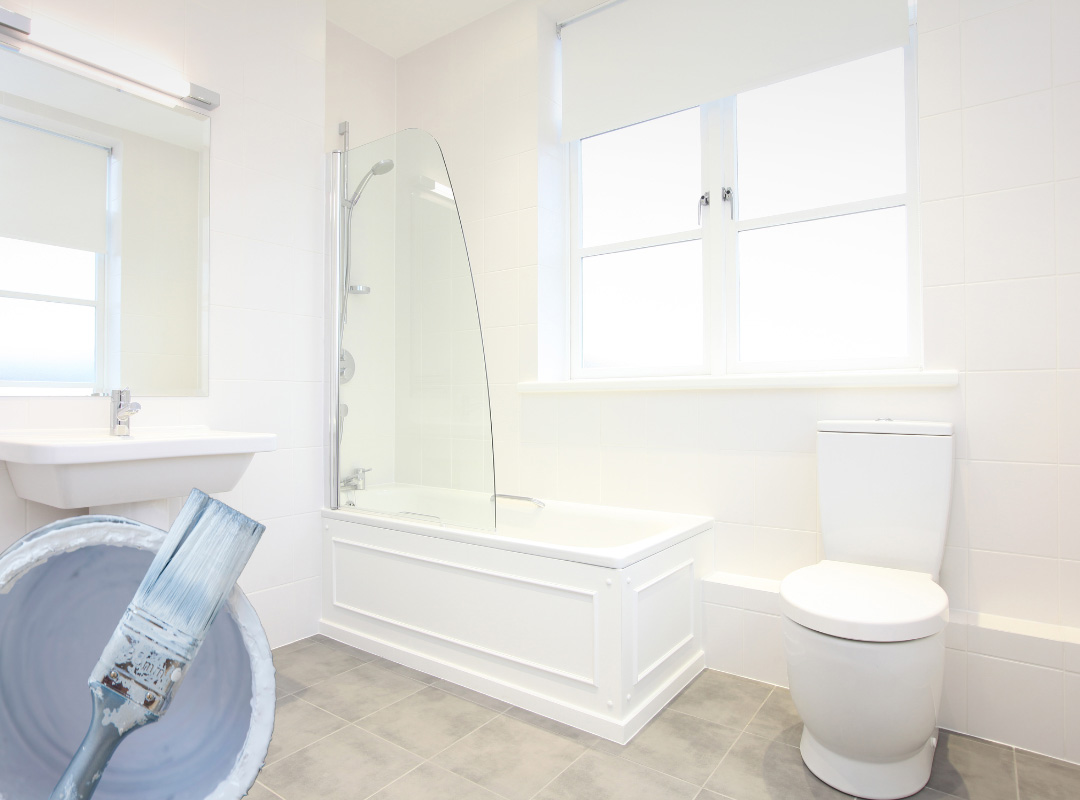5 Things You Need to Know Before Painting a Bathroom

Painting a bathroom is a bit different from painting the other rooms in your house, for a few obvious reasons. Bathrooms are wet, humid areas that see a lot of heavy use day in, day out, and have fixed wall objects that need to be carefully painted around. If you’re considering painting a bathroom, here’s our top 5 things you need to know before you start.
1. Choosing the right type of paint (and primer) for your bathroom
Paint choice is important but choosing the right primer for painting a bathroom is too.
If you’ve ever seen a bathroom with peeling paint, it’s because moisture has seeped between the paint and the surface, which commonly happens in poorly ventilated wet areas. Choosing a mould or moisture-resistant primer, at the very least, will go a long way to preventing this.
Many hardware stores and painting specialists sell paint specifically for bathrooms, but if you’re choosing a general paint, go for one that’s high or semi-gloss finish rather than a matte finish – glossier paints tend to repel moisture better, and matte paint in bathrooms can show water streaks over time.
2. It’s all about the colour
Paint colour in the bathroom is just as important as the rest of your house but making a bold or bright choice may be something you regret in the future; there’s a reason most bathrooms are painted in a neutral palette. Our article on bathroom colour schemes may help with some inspiration on how to choose a paint colour that won’t go out of style.
Something else to consider is how much paint you’ll need – if you’re buying specialty paint for its mould-resistant properties, chances are you don’t want to over buy. Take some time to calculate how much paint you'll need, so you buy just enough to get the job done. Remember, you’ll need to do a primer coat and two coats of paint over top.
3. Clean all surfaces thoroughly
Bathrooms get dirty quickly, because of the moisture and how often they’re used. Taking the time to clean the bathroom of any mould, mildew or built-up soap scum and grime before painting is a must-do activity. This will help the paint to adhere to the wall and ensure you don’t get anything bleeding through once you’re done.
4. Painting around awkward objects
Fixed wall (and floor) objects like baths, showers, toilets, and vanities are one of things that make painting a bathroom one of the trickiest DIY rooms of all. You’ll need to carefully mask as best you can around them and consider removing what can be removed from the walls – mirrors, heated towel racks, light switch covers – to make it easier for yourself. Smaller brushes and rollers will be needed for those hard-to-reach places, like behind the toilet.
5. Let it dry
Once you’ve painted your bathroom, you need to give it plenty of time to dry and cure thoroughly before using it again. Taking a shower before the walls are dry will impact the paint finish, causing paint runs and streaks. Ventilate the area well and avoid using the shower for at least 2-3 days.
Getting professional help with painting a bathroom
Painting a bathroom can be a room to far in terms of doing-it-yourself and calling in the professionals to help you get it done quickly can save you a lot of time and fuss.
Here at Kraudelt Painting, we’re the interior and exterior painting experts, and know exactly how to ensure you get a water-safe finish that will last for years in your bathroom. For professional advice, colour consultancy and a quote for painting your bathroom, get in touch today.
